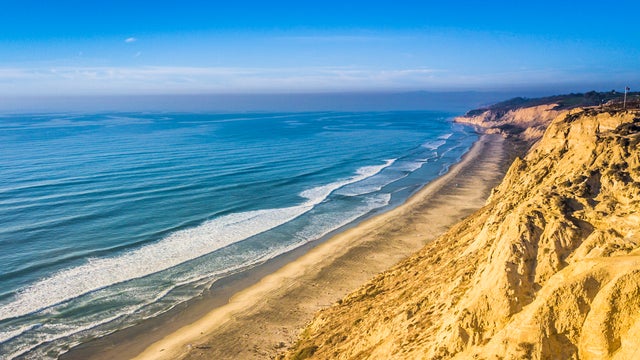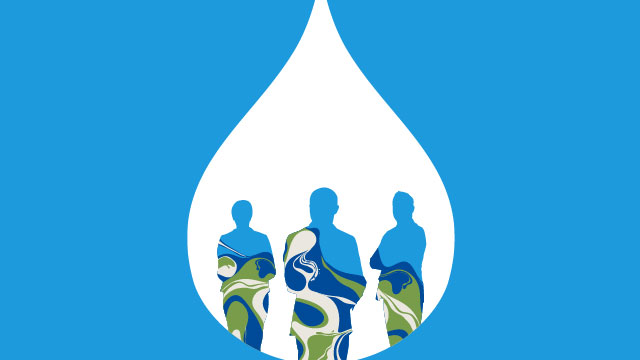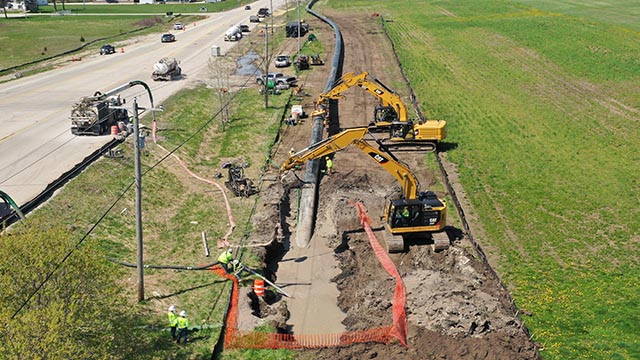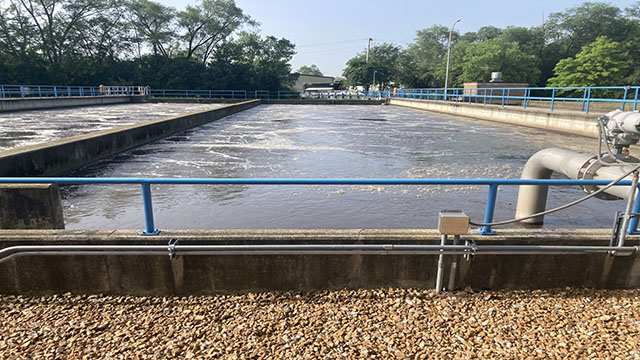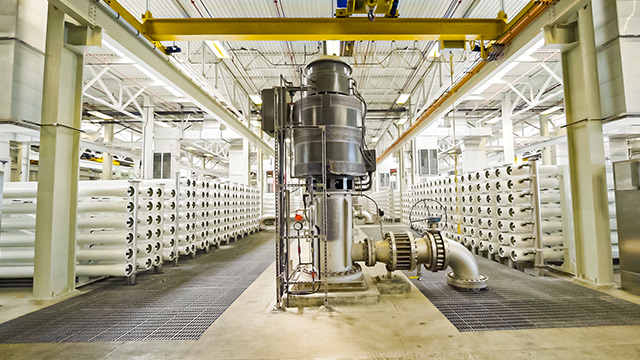Across the spectrum of water utilities, the churn of challenges has seldom been more glaring, squeezing stakeholders and forcing them to think outside the box.
Aging infrastructure and the graying of the industry’s retirement- bound workforce remains a vexing issue, decades in the making. Climate change continues to assert itself in dramatic ways — from a “megadrought” gripping a large swath of the western United States to intense flooding elsewhere — that test the ability of water utilities either to provide enough water or effectively handle historic inundations.
All of this is compounded by a global pandemic. Beyond its tragic death toll, COVID-19 unleashed a worldwide financial meltdown fanned by government-ordered shutdowns of businesses and industries. Unsurprisingly, U.S. water utilities are taking an operational and financial hit as some of their biggest clients — commercial and industrial users — have halted operations and tens of millions of laid-off U.S. workers have stymied the ability of households to pay their utility bills, undercutting revenue to water and energy providers.
Welcome to a transformative time in the world of water, where government and water industry decision-makers around the globe continue to absorb how climate impacts and increased financial constraints threaten our supply’s resilience.
Now more than ever, stakeholders faced with such complexities continue to embrace the promise of “digital” or “smart” water. That means harnessing data to precisely track consumption, drive customer engagement, optimize performance and prioritize investment dollars. Increased sustainability and resilience through informed asset management (AM) and planning are the rewards, along with the invaluable, holistic view of the water system.
2020 Strategic Directions: Water Report
With its survey of nearly 300 water industry stakeholders as its backbone, Black & Veatch’s 2020 Strategic Directions: Water Report comprehensively analyzes the sector’s complex landscape of challenges and opportunities. The leveraging of data in driving decision-making and optimizing efficiencies in water and wastewater systems is widening even as infrastructure continues to age, climate change strains assets, and the COVID-19 pandemic’s financial havoc pressures the bottom lines of many utilities through lost revenues. We look at all of that and more.
Digital Water: Solutions in the Numbers
To little surprise, U.S. water utilities — the municipalities and private companies that provide the tens of thousands of community water systems that are the backbone of this nation’s water sector — are doing more with less. Eighty percent of the nearly 300 North American respondents to Black & Veatch’s 2020 Strategic Directions: Water Report survey cited aging water and wastewater infrastructure as the industry’s chief challenge. That’s an overwhelming alignment which is independent of the size or region of the utility and easily eclipses other issues such as justifying capital improvement programs, managing capital costs or system resilience.
Enter the power of data to gain insight about when, where and how much to invest in our systems. The opportunity to gather and integrate data using our current data collection systems — combine with evolving next-generation, cost-effective sensors and smart devices — provides the input to allow for the predictive analytics to detect leaks, forecast usage, reduce costs and everything in between.

Some 15 percent of respondents report having a robust, fully integrated approach to data, encouragingly up from just 5 percent a year earlier. Some 56 percent say their data-management efforts are strengthening but not fully integrated, consistent with 2019’s results. Nearly 30 percent — a slight decrease from one-third a year earlier — say their data remains largely unintegrated in silos.
Asked separately about their data’s meaningfulness, nearly 60 percent respondents reported that while they were collecting “lots” of data, it wasn’t being leveraged to actionable information. Just 20 percent said they were making the most of their data, with only 15 percent admitting they were corralling “some” data and using it effectively.
Siloed data amounts to lost opportunity, costing operators the vast benefits of expansive data harvesting that can give meaningful insights about their entire water ecosystem. Better date use also can guide them to higher operational efficiency, performance predictability, maintenance planning and optimized workforce needs. If you think of the utility’s components as its nervous system, maximizing data collection through digital tools can give utility managers the clearest picture of its overall health — a forward-thinking approach.
In addition to digital water’s influences and climate change impacts on the water industry, and other key issues, our report examines:
- Aging infrastructure: For the water industry, the pursuit of sustainability has been challenged in recent decades by insufferable headwinds involving the aging of both the industry’s infrastructure and its workforce. With the water system in urgent need of repair, maintenance and restoration, we look at how sizable the sector’s concerns about each of these are — and to what extent they’re dealing with them. What strategies should be deployed?
- Water reuse: Weighty issues such as population growth, climate change, regional droughts and floods are pushing the availability of freshwater— and the need to mitigate effluent discharge — to the forefront of water management. As more utilities take a circular economy approach to water resource management and sustainability, what are the latest trends in water reuse, including reclaimed water? What measures can utilities take to overcome cost and public acceptance barriers to implement more water reuse solutions?
- Water affordability: Customers expect that when they turn on the faucet, they will get potable water at adequate pressure and enough of it for their on-demand needs. They expect to pay for this level of service but at reasonable prices. The question then becomes, “Is water affordable?” The answer may become more elusive against the backdrop of the COVID-19 pandemic, which could challenge a utility’s reserves, how rates are structured and how a utility looks to manage its customer services and operations.

Climate Change a Key Concern
Discussed separately at length in this report, climate change — and the increasingly worrisome predictions about it — continue to grab attention among water utilities as one of the great water challenges of our time. More than 80 percent of respondents to Black & Veatch’s survey listed natural or manmade disasters as their top resilience concern. Catastrophic infrastructure failure was a distant second (56 percent), followed by another climate change-related category — extended drought and supply restrictions — at 38 percent.
Asked separately which elements are included in their water supply plan, 85 percent of those surveyed said water conservation or drought management. Nearly 70 percent said “scenario planning,” with climate change and variability closing out the top three at 55 percent.
Just half of respondents declared they were “somewhat more confident” about their supply forecasting model now than in recent years. Twenty-five percent said their confidence is unchanged, while an identical amount said they were “somewhat less confident” today.
A Pandemic Affects the Water Sector
Because the online survey for this report was conducted during a three-week span ending on March 30, 2020 — a time when the COVID-19 pandemic was accelerating — it’s difficult to discern how much of an impact that global outbreak had on the responses. Or whether the data would be dramatically different if the survey was done later during the height of the virus’ spread.
Undeniably, as also discussed in this report, the pandemic has rattled the water industry. Beyond the universal need for reliable access to clean water for public health -- regardless of one’s ability to pay -- the outbreak forced many commercial and industrial customers to halt operations. In turn, that has strained utilities’ revenues and cash flows. Tens of millions of U.S. workers were laid off during the outbreak, rendering many of them unable to pay their water bills. Around the country, water providers suspended water and wastewater shutoffs to delinquent accounts, in both the interest of humanity and as affirmation of the importance of water and sanitation in trying to contain the virus.
At the time of this report, questions lingered about whether the federal government planned to direct taxpayer aide to municipalities, given COVID-related revenue shortfalls that likely would impact whether investments in water infrastructure go forward, or if the industry will face belt-tightening challenges akin to the financial crisis more than a decade earlier.
The National Association of Clean Water Agencies (NACWA) led a joint water sector request to Congress on May 14, 2020, to address the coronavirus pandemic’s impacts on drinking water systems, clean water systems and water recycling systems. Current predictions estimate a $16.8-billion impact to clean water utilities and a $13.9-billion impact to drinking water utilities due to lost revenue. NACWA warned that without taxpayer help to the industry, the revenue loss from forgiving customer debts and providing services without payment during the pandemic ultimately would be passed on to water customers in subsequent years and lead to future rate increases.
This is a time of great challenge, and with it comes an opportunity to drive change; change that can be fueled by innovation in strategy, operations and funding to protect human health and our environment and to facilitate the economic engine that comes from infrastructure investment.
About the Author
Cindy Wallis-Lage is President of Black & Veatch’s water business, leading the company’s efforts to address water infrastructure needs around the world. A global champion for the world’s water resources, she advocates understanding water’s true value and promoting its resilience so that communities may achieve their social, economic and environmental sustainability goals. Wallis-Lage has been involved in more than 100 projects worldwide, helping public and private entities successfully, develop, enhance and manage their water, wastewater and stormwater facilities and infrastructure.

